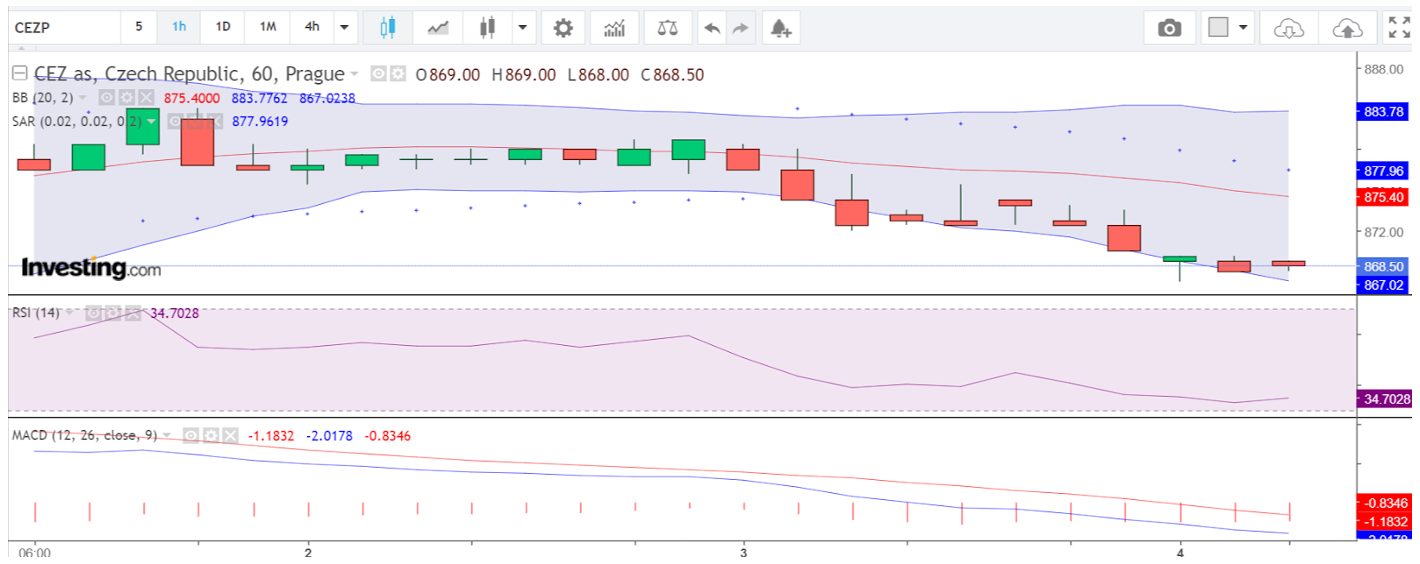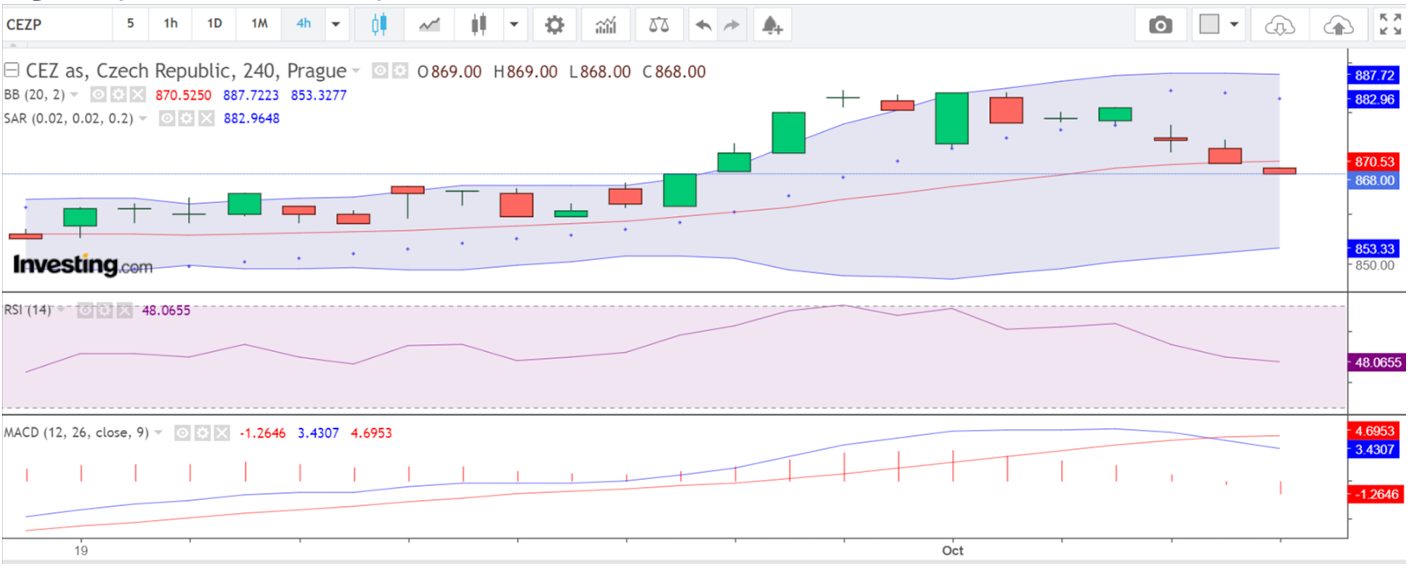CFD Trading in the Czech Republic



Contract for difference (CFD) trading has gained traction in the Czech Republic. They allow traders to speculate on the price movements of various underlying assets, such as Czech stocks, without owning the actual asset.
CFDs became widespread in the Czech Republic in the 2000s as the country’s financial markets became more sophisticated following its EU membership and as global brokers began marketing their products to its residents.
Looking to start CFD trading in the Czech Republic? This beginner’s guide will arm you with the essentials.
Quick Introduction
- With CFDs, you don’t own the underlying asset, like natural gas, which Czechia heavily relies on. Instead, you enter a contract with the broker to exchange the price difference between the contract’s opening and closing.
- The appeal of CFDs lies in their flexibility, offering opportunities for leveraged trading to amplify trading results (profit and loss), diversification across various asset classes, and short-selling in both rising and falling markets.
- CFD trading is regulated by the Czech National Bank (Česká národní banka), which followed the lead of the European Securities & Markets Authority (ESMA) in restricting CFDs for retail clients through measures like leverage limits and negative balance protection.
Best CFD Brokers in the Czech Republic
Through hands-on tests, we've identified these 4 providers as the best for CFD traders in the Czech Republic:
How Does CFD Trading Work?
CFDs provide an opportunity to trade Czech, European and global financial markets without the added capital investment needed to own the actual asset. Instead, you predict whether the price of an asset will increase or decrease.
Leverage is one of the most attractive elements of contracts for difference. This allows you to open large positions while committing a fraction of the total value or margin.
Here’s how it works:
Let’s say you enter a CFD buy position because you believe the Czech PX Index will rise. Each contract is valued at Czech Koruna (CZK) 1,600, and your brokerage requires a 5% margin. To take a position on 10 contracts, your margin requirement would be 800 (1,600 per contract x 10 contracts x 5%).
If the PX index rises to 1,700, the price increase would yield CZK 100 per contract. By closing your position, you would realize a total profit of CZK 1,000 (10 contracts x CZK 100), excluding any fees your broker charges.
Conversely, if the index falls to CZK 1,500, you would lose CZK 1,000, illustrating the inherent risks associated with CFD trading; losses and gains are magnified.
Understanding the margin requirements and serious risks associated with leverage is vital.For anyone new to CFD trading, a demo account provides an introduction to practice strategies and build confidence before risking real capital.
What Can I Trade?
CFDs provide many trading opportunities across various financial markets, both local and international:
- Stock CFDs – Speculate on individual Czech company stocks quoted on the Prague Stock Exchange, like Erste Group Bank AG, Photon and CEZ. You can trade these highly liquid/capitalized firms as CFDs without purchasing the shares.
- Index CFDs – The PX index is the official price index of the Prague Stock Exchange. It is a free-float weighted price index comprising the most liquid stocks and calculated in real-time. Traders often choose index CFDs to capitalize on the Czech market’s overall performance rather than trade individual shares. Alternatively, you could explore index CFDs on major global indices like the Dow Jones or the NASDAQ.
- Forex CFDs – The Czech Koruna (CZK) is moderately well-traded in the foreign exchange market. You can speculate on currency pairs including USD/CZK and EUR/CZK. Alternatively, you could trade prominent pairs like EUR/USD and EUR/GBP.
- Commodity CFDs – Essential commodities such as natural gas, livestock, and steel can be traded as CFDs, allowing you to speculate on the price movements of these resources that are important to the Czech economy.
- Crypto CFDs – The growth and curiosity surrounding digital asset trading have reached the Czech Republic. You can trade cryptocurrency CFDs like Bitcoin and Ethereum, giving you access to the highly volatile and high-risk world of crypto.
Is It Legal To Trade CFDs In The Czech Republic?
Trading contracts for difference is legal in the Czech Republic. The Czech National Bank (Česká národní banka) regulates CFD trading and oversees the country’s financial markets and has increased its oversight and restrictions of these high-risk financial products over the years.
CFD trading in Czechia, as in the rest of the European Union, is subject to regulations imposed by the European Securities and Markets Authority (ESMA).
Key regulations include:
- Leverage Limits: Limits on the leverage that retail traders can use when trading CFDs. For example, leverage is typically capped at 1:30 for major currency pairs and lower for more volatile assets like cryptocurrencies, which are usually capped at 1:2.
- Negative Balance Protection: Retail clients are protected from losing more than their initial investment, ensuring your accounts do not become negative balances.
- Margin Closeout Rule: Brokers must close out a client’s position if the client’s funds drop below a certain threshold (typically 50% of the required margin).
- Risk Warnings: Providers must display risk warnings to inform clients about the high risk of CFD trading, which can result in significant losses.
Is CFD Trading Taxed In The Czech Republic?
CFD trading is taxed in the Czech Republic and is subject to income tax, considered capital gains.
The general capital gains rate is 15% for individuals, rising to 23% for income exceeding a certain threshold.
Profits made from CFD trading are added to your taxable income. Losses from CFD trading can often be used to offset gains from other investment activities, but it’s important to check specific rules or consult a local tax advisor for the latest details.
If you use a foreign broker for CFD trading, your earnings may still be subject to Czech tax law. You may be able to claim a tax credit to avoid double taxation, depending on double taxation treaties between Czechia and the country where the broker is based.
Under certain circumstances, capital gains from the sale of financial assets, including CFDs, may be exempt from tax if held long enough. However, CFDs are typically considered short-term trading instruments and less likely to qualify for such exemptions.
An Example Trade
We’ve covered the theory but let’s move on to how CFD trading in the Czech Republic works in practice.
Background
I’m trading CEZ (CEZP) using a CFD.
ČEZ Group is a conglomerate of 96 companies, 72 of which are in the Czech Republic. Its core businesses are the generation, distribution, trade, and sales of electricity and heat, trade and sales of natural gas, and coal extraction.
ČEZ Group operates in Germany, Hungary, Poland, Romania, Slovakia, and Turkey.
Fundamentals
When considering a market position, I always examine a quoted firm’s basic metrics. Because I’m not looking to invest (buy and hold), I scan data to identify quick opportunities to profit on the day or perhaps hold over.
However, many of the metrics I use to take a position would also be used by investors; I just don’t have the luxury of spending days analyzing the data.
Typically, I look at:
- The P/E ratio was 16.34 for CEZP
- The EPS (earnings per share) were 52.89
- The Gross profit margin was 49.1
- The 52W range was 798-1022
I also scan financial news to gauge overall analyst sentiment quickly. If you don’t have a Bloomberg or Reuters subscription, there’s enough information on free and accessible sources like Investing.com, Yahoo Finance and Google Finance.
Technical Analysis
I avoid clutter on my charts, so I concentrate on technical indicators covering market forces such as trend, volume, volatility, momentum, oversold, and overbought conditions.The MACD, RSI, Bollinger Bands, and PSAR combined with Heikin Ashi candles/bars provide me with all the technical readings I need to decide.
Realizing that technical analysis (TA) is not infallible is important. Some estimates suggest you’ll be ‘right’ with TA only 65% of the time, but there are other reasons to use TA other than trying to identify price-action; TA delivers a reason to get in and out and the ability to adjust your stop loss and profit limit orders.
Put it this way: what else would you use to get in and out and move your trailing stop? Without TA, you’re simply guessing. With TA, you’re making logical judgments based on what you see on your charts. That control that offers you helps you limit risk and calculate your position size vs account size.
1-Hour Timeframe
A combination of the PSAR reversing and appearing above price, the RSI falling below the media 50 line, the BBs widening and price breaching the 20EMA to the downside, and the moving averages of the MACD diverging with the histogram increasing its bearish appearance encouraged me to take a short position.
As you can see in the chart below, the full, bearish HA bars with short shadows supported my conviction.

4-Hour Timeframe
It’s often sensible to judge your decision to enter or exit across different timeframes, one higher and one lower. However, when day trading, you could only select the 4HR or daily (D1) as the higher TF, as the weekly or daily can’t possibly generate the price action signals you need as a day trader.
As you can see in the chart below, the readings on the 4HR TF supported my interpretation of the 1HR; the MACD MAs crossed, the PSAR was above price, the RSI was volatile, and the reading fell below the 50 median line.
The HA pattern indicated bearish conditions, too; a Doji formed, followed by bearish bars.

Execution
Due to the effective use of leverage, I only had to put up 5% of the overall position size for this trade, meaning the 10 contracts I traded didn’t cost the full €878 x 10. Instead, my commitment was €878 x 10 x 5% = €439.
My risk was also capped by placing my stop-loss order near the recent high of 884.
Using leverage carefully, I could control a much larger CFD position compared to buying the Czech shares outright without using leverage.
- I entered short at 878
- Stop loss order at 884
- Profit limit order executed at 868
Bottom Line
CFD trading is legal and regulated in Czechia, and any profits from such trading are subject to taxation under the country’s income tax laws.
However, despite heightened rules on the provision of CFDs in the Czech Republic, they remain high risk – you could lose any Koruna you invest.
To get started check out DayTrading.com’s pick of the best CFD day trading platforms.
Recommended Reading
Article Sources
- Czech National Bank (Česká národní banka), CNB
- CFD Restrictions - CNB
- Czech PX Index
- Czech Koruna (CZK) - Google Finance
- European Securities and Markets Authority (ESMA)
- ČEZ Group
The writing and editorial team at DayTrading.com use credible sources to support their work. These include government agencies, white papers, research institutes, and engagement with industry professionals. Content is written free from bias and is fact-checked where appropriate. Learn more about why you can trust DayTrading.com



